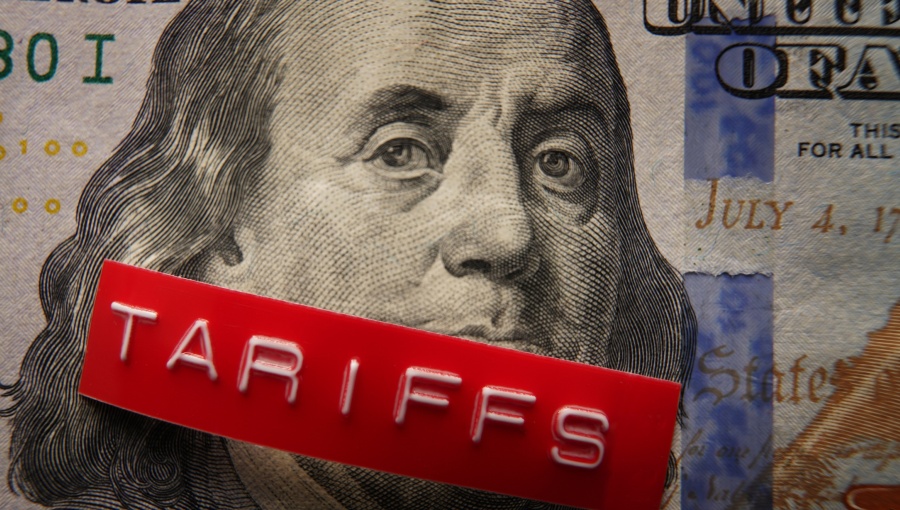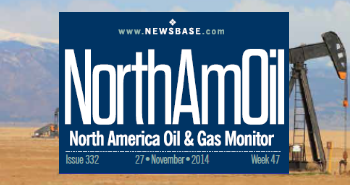US midstream and other oil, gas projects may get pricier with Trump’s latest tariffs

Midstream and all other oil, gas projects may get pricier with Trump’s latest tariffs
Domestic industries have a reasonable expectation of how the scenario may well unfold.
WHAT: Trump has imposed 25% steel and aluminium tariffs
WHY: He is trying to redraw world trade
WHAT NEXT: Domestic industries have a reasonable expectation of how the scenario may unfold
Oil and gas drilling equipment and pipelines are made of steel and aluminium. And with Trump's latest tariffs, building new transmission lines, which are necessary for rapidly growing gas-fuelled electricity, would get more expensive.
Newly inaugurated President Donald Trump has just imposed stringent tariffs on US imports of steel and aluminium. Domestic industries have a reasonable expectation of how the scenario may well unfold. Trump had previously imposed steel and aluminium tariffs in his first term.
Manufacturers of oil and gas pipelines, vehicles, home appliances and construction machinery are now striving to locate American sources for their metal requirements, leading to increased demand for domestic steel and aluminium producers. However, businesses reliant on specific alloys unavailable locally must pay more, consequently raising the overall cost of goods.
The pro-fossil fuels and second-term president Trump, as expected, on 9 February said he would impose tariffs on all imported steel – but not iron – and aluminium. Copper may be next, he told reporters as he travelled on Airforce One.
Exemptions?
There is still uncertainty surrounding potential exemptions or negotiated agreements. The Trump administration might allow certain countries to export metals without these new tariffs or establish a process for companies to apply for relief due to hardship. At present, a White House official has indicated that no such exclusions will be granted. This ambiguity is seen as prompting steel-reliant businesses to tread cautiously before the new taxes on steel and aluminium that will take effect on 12 March.
Angela Holt, leader of a precision machining firm and chair of the Indiana Manufacturers Association, noted that the ramifications for legacy – and to a degree newer industry – businesses are complex and vary widely across industries.
Lessons for oil and gas from 2018
Although the American iron and aluminium industries have waned since their peak in the 1970s, the country still imports only around 26% of its steel, a figure that has been gradually declining. Domestic metal producers currently operate at roughly 70% capacity, with the first Trump administration briefly elevating this to 80%. However, the impact of underpriced Chinese exports has caused US plant closures and reduced orders for existing US mills.
Research from 2020 by Columbia University, Princeton University and the Federal Reserve Bank of New York suggests that foreign suppliers absorbed about half of the 2018 tariffs by lowering their prices to retain access to the American market.
Yet steel and aluminium costs still rose. In 2023, the US International Trade Commission (ITC) found that the previous tariffs had raised steel and aluminium prices by an average of 2.4% and 1.6% respectively.
Unsurprisingly, the stock values of steel companies like Nucor, Steel Dynamics and Cleveland-Cliffs climbed following the announcement of renewed tariffs.
Further complicating matters is the possibility of additional tariffs on Canadian imports, which Trump has suggested could take effect on 1 March.
Industries most affected
To understand the impact of these tariffs, it is useful to examine which industries rely most heavily on iron, steel and aluminium.
The ITC’s analysis of the 2018 tariffs found that motor vehicle metal stamping had the highest dependence on steel, at 58%.
In 2023, Tesla had sought an exemption from tariffs for imported steel used in the Cybertruck’s stainless steel body, highlighting how supply chain constraints affect even major industry players.
The construction industry is another sector likely to be heavily affected. Large-scale developments, including commercial buildings and apartment complexes, require substantial amounts of reinforced concrete, which depends on steel rebar.
In fact the new tariffs could run counter to efforts to make fossil fuel energy more affordable, while increased material costs could drive up project prices and deter new developments.
Broader economic consequences
The full extent of the impact on industries like infrastructure and aviation remains uncertain.
Government-funded projects, such as bridges, rail networks and naval vessels, may also see rising costs. Although these projects are typically required to use American-made steel and aluminium, tariffs could still inflate the prices of these materials, placing additional strain on public budgets.
Energy production, both fossil fuel-based and renewable, is indeed another sector that could feel the pinch, say analysts.
Equipment for oil drilling, pipelines, wind turbines and solar panel installations all require substantial amounts of steel and aluminium. Higher material costs could simply hinder the expansion of energy infrastructure. Some companies might try to circumvent tariffs by purchasing finished products from abroad, but this would contradict the objectives of government subsidies designed to promote domestic manufacturing.
North American oil and Trump tariffs
The potential implementation of tariffs of all imports from Canada and Mexico would certainly significantly alter the flow of crude between the US, Canada, and Mexico. The US imports more crude from Mexico than from any other country, while Canada is the largest exporter of crude to the US. They are the US’s two largest trade partners.
Research from Wood Mackenzie suggests that a 10% tariff on Canadian oil and a 25% tariff on Mexican oil would shift North American crude markets, leading to price increases and supply chain disruptions. Mexican crude exports would likely be redirected to Europe and Asia, while Canadian oil could see greater export volumes moving to Asian markets via the Trans Mountain pipeline and its extension. The TMX came online in May, running from land-locked Alberta to the British Columbia coast. It is currently mostly used for exports of crude to Asia and the US West Coast.
The US Gulf Coast, which processes large amounts of heavy crude, may struggle to replace Mexican and Canadian imports with alternative sources such as Middle Eastern and Latin American supplies. This shift could lead to higher costs for American refiners and, ultimately, consumers.
Political and economic implications
On 10 February, Trump followed through on his long-standing promise to impose broad tariffs on Canada, Mexico and China, citing concerns over fentanyl trafficking and unauthorised immigration.
Despite Trump’s justifications – such as revenue generation and trade rebalancing – many economists argue that these measures would harm American businesses and consumers. The US Chamber of Commerce has warned that tariffs will disrupt supply chains and exacerbate inflation, with industries like energy and food being particularly vulnerable.
The repercussions will be felt most acutely in states that rely on Canadian oil imports, such as the Midwestern states of Illinois, Indiana and Michigan. Although gasoline prices are currently low due to seasonal demand fluctuations, extended tariffs could drive up costs in the summer months.
While Trump views tariffs as a means of exerting economic pressure, history suggests they often lead to unintended consequences even for a mercantilist president such as Trump. As tensions escalate, businesses and consumers alike must brace themselves for the economic turbulence ahead.



Follow us online